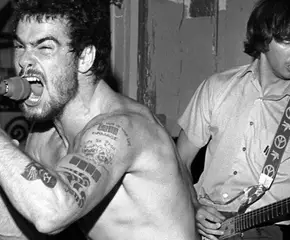On the night of April 18, 1775, Paul Revere rode from Boston to Lexington and Concord to warn his fellow patriots that the British were approaching.
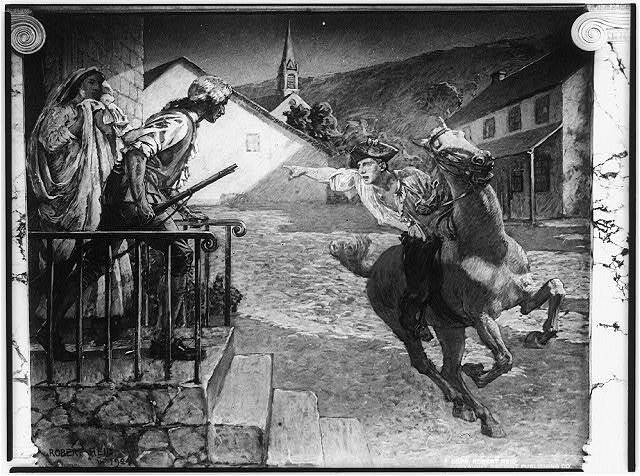
Library of CongressRobert Reid’s depiction of Paul Revere’s ride.
On the night of April 18, 1775, American colonists learned that the British were about to go on the march. They dispatched a rider named Paul Revere to warn revolutionaries in Lexington and Concord. And Paul Revere’s ride, on the eve of the American Revolution, would become one of its most iconic moments.
This legendary event, which has been immortalized in poems, films, and annual parades, has been shaped and remolded over the last 200 years. Beyond the myth lies the true story of a silversmith caught in the tide of revolution, whose bravery paved the way for the first shots of the Revolutionary War.
Read on to learn the true story of Paul Revere’s ride.
Who Was Paul Revere? His Path To The American Revolution
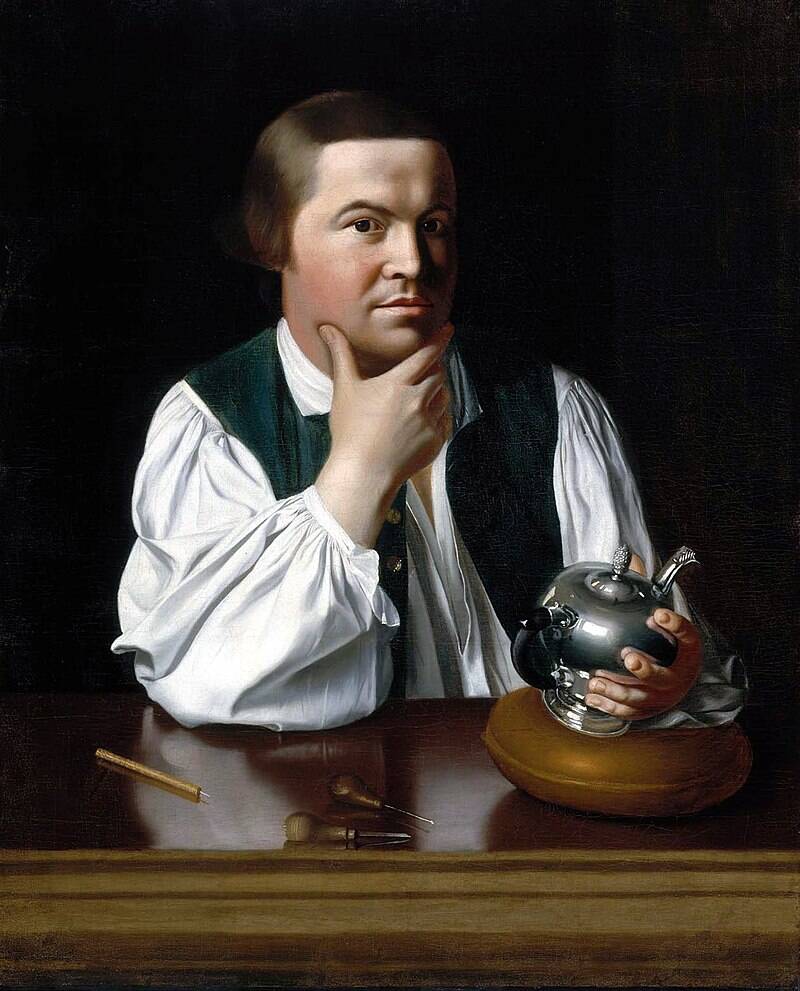
Public DomainJohn Singleton Copley’s Portrait of Paul Revere c. 1768–1770.
Paul Revere was born on January 1, 1735, in the Massachusetts Bay Colony. His father, French silversmith Apollos Rivoire (later anglicized to Revere), came to Boston when he was 13 and later married colonist Deborah Hitchborn. Paul Revere was one of 12 children born to the couple.
When he was 13, Revere began a silversmith apprenticeship with his father. Through his work, Revere made connections with Boston’s elite — relationships that would later serve him well during the American Revolution.
During the French and Indian War, Revere commissioned as a second lieutenant in a provincial artillery regiment stationed in New York. After his service, he returned to Boston to take over the family silversmith business (his father had died in 1754) and marry a local woman, Sarah Orne. Together, the couple had seven daughters and one son.
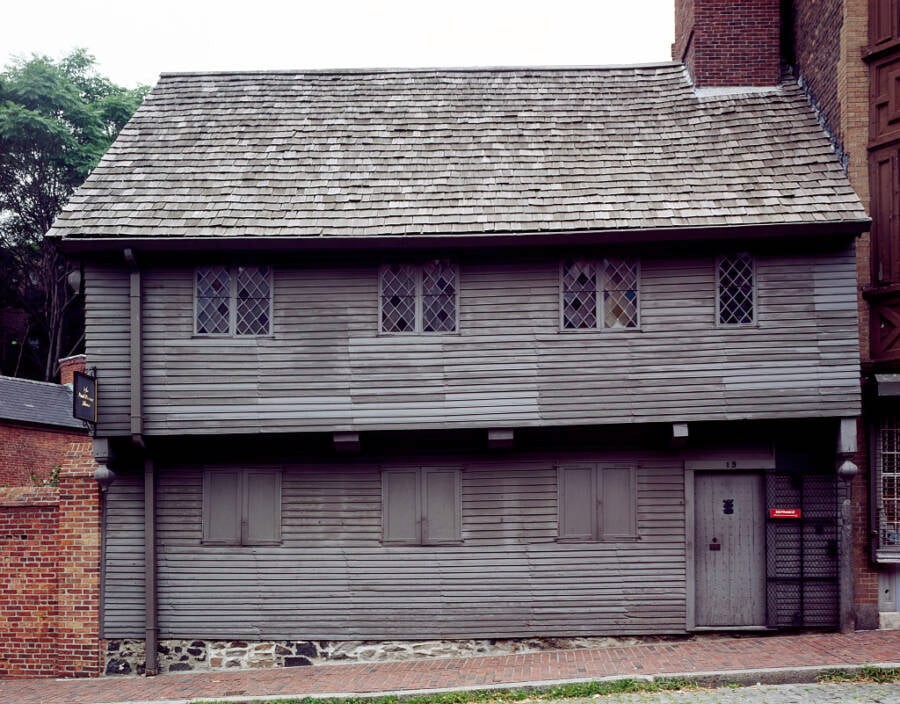
Library of CongressPaul Revere’s house, which the silversmith bought in 1770 when the building was already almost a century old.
After the French and Indian War, the British government enacted several taxes on the American colonies to pay off debts incurred by the conflict. The passing of the Stamp Act of 1765 caused financial troubles for Revere’s silversmith shop as well as other business owners in the Massachusetts Bay Colony, leading to growing resentment — and the formation of secret meetings to discuss and condemn British policies.
Revere participated in such meetings. In 1765, he joined the Sons of Liberty, an underground political organization that used both violent and nonviolent tactics to fight against British rule in the colonies. But still, tensions between the colonists and the British continued.
The colonists were outraged when, on March 5, 1770, British soldiers fired on a crowd of colonists, killing five people. The British were likewise incensed when colonists dumped over a million dollars worth of English tea into the Boston Harbor on December 16, 1773 during the Boston Tea Party.
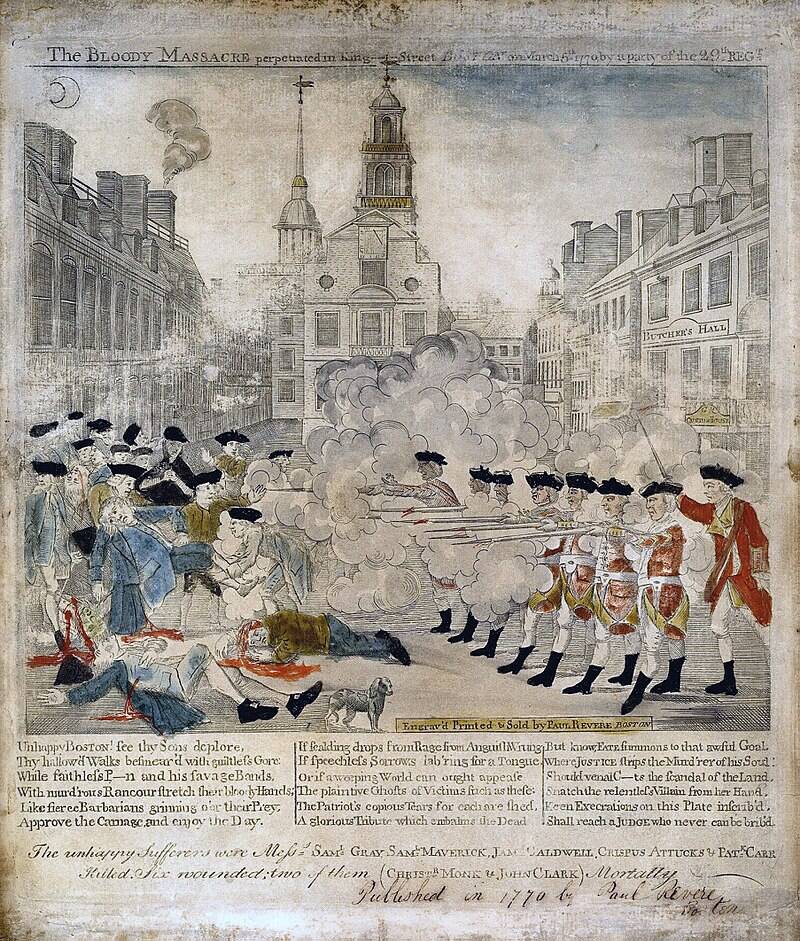
Public Domain Paul Revere’s engraving of the Boston Massacre, with his signature in the bottom right corner.
Revere had been one of the ringleaders of the Boston Tea Party, and his involvement in the burgeoning American Revolution only grew in its aftermath. Alongside 30 other men, Revere covertly discussed plans and shared information about the movement of British troops at Boston’s Green Dragon tavern, which still operates today.
Then, on April 18, 1775, Revere received shocking news about incoming arrival of British troops. Paul Revere’s ride to warn his fellow revolutionaries about their movement would kick off one of the greatest American legends.
“The British Are Coming!” Paul Revere’s Ride Through The Massachusetts Countryside
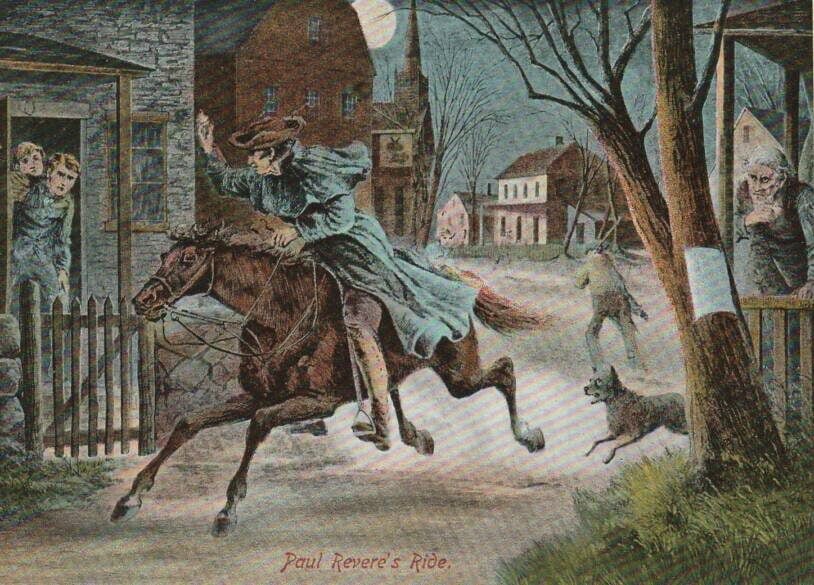
Jasperdo / FlickrA vintage postcard of Paul Revere’s ride.
Between 1774 and 1775, Paul Revere was employed as an express rider, tasked with carrying news and messages documents. In this capacity, he also reported on British movements. In December 1774, he rode all the way to New Hampshire to alert the colonists that the British intended to seize gunpowder from a fort (though the intelligence was faulty). Eleven days before his more famous journey, Paul Revere also rode to Concord, instructing colonists to move a cache of military supplies.
But Paul Revere’s ride into history took place on April 18, 1775. That evening, Revere was notified that British soldiers stationed in Boston were about to march toward Lexington and then Concord. They had been ordered to “seize and destroy all Artillery, Ammunition, Provisions, Tents, Small Arms, and all Military Stores whatever…” The Sons of Liberty also feared that they would seek to arrest revolutionary leaders Samuel Adams and John Hancock — future signers of the Declaration of Independence — in Lexington.
After hearing the news, Revere got to work planning how to inform the residents of Lexington before it was too late. Revere asked a friend to send a signal by lantern reporting on the movement of the British troops: “one if by land, two if by sea.” Revere instructed him to light two lanterns to warn the colonists that the British planned to row across Boston Harbor.
Then, around 10:00 pm that night, Revere rowed across the Charles River and arrived safely in Charlestown. He borrowed a horse from John Larkin, a merchant and patriot sympathizer — and took off.
Revere rode to Lexington without being spotted and spread the warning about the British. A fellow member of the Sons of Liberty who had also been tasked with spreading word about the British, William Dawes, joined him in Menotomy (today’s Arlington). Dawes had taken the longer route along Boston Neck, and continued with Revere to Lexington.
Another ride also joined the effort, a doctor named Samuel Prescott. And while Paul Revere never shouted the famous phrase, “the British are coming,” he did warn households “the Regulars are coming out.”
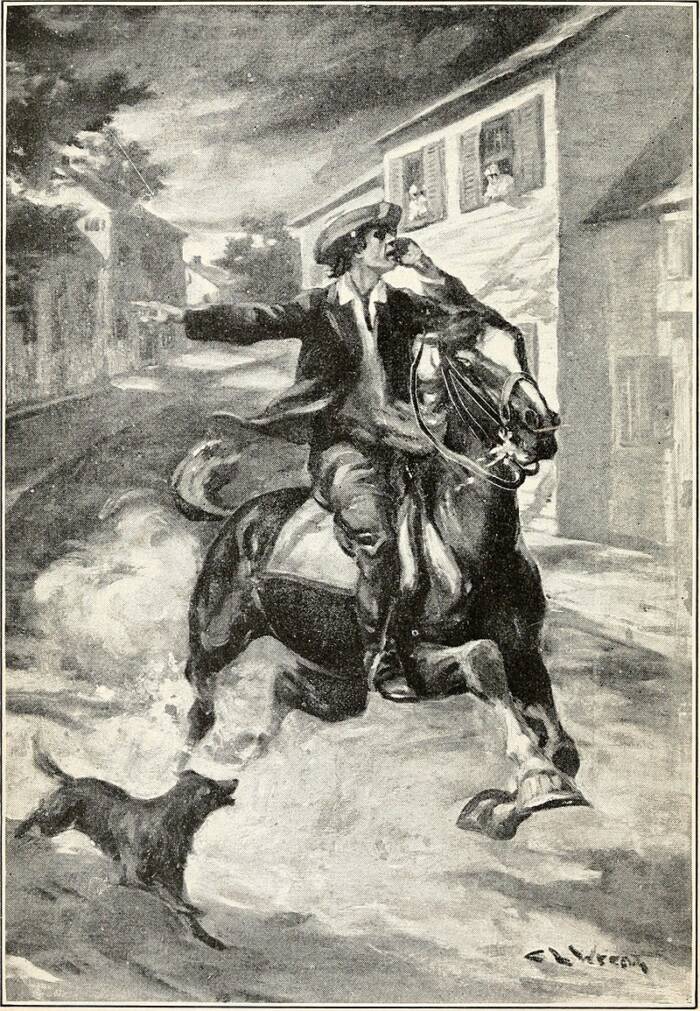
Fair UseA 1916 depiction of Paul Revere’s ride.
Revere and Dawes reached Lexington around midnight and passed on their warning to Samuel Adams and John Hancock. Revere and Dawes then continued their ride to Concord, alongside Prescott.
However, Revere would never make it. After encountering a British patrol outside of the town, Revere was arrested. Prescott managed to escape on horseback into the woods and successfully arrived in Concord; Dawes had also escaped but fell off his horse and walked back to Lexington.
Revere was questioned by the British for over an hour, but things became clear when the British heard gunfire in the distance. They let Revere go. Revere then walked back to Lexington, where the Battle of Lexington and Concord began that morning around 5 a.m. with the “shot heard ’round the world.”
The American Revolution had begun.
Remembering The Historic Midnight Ride Today
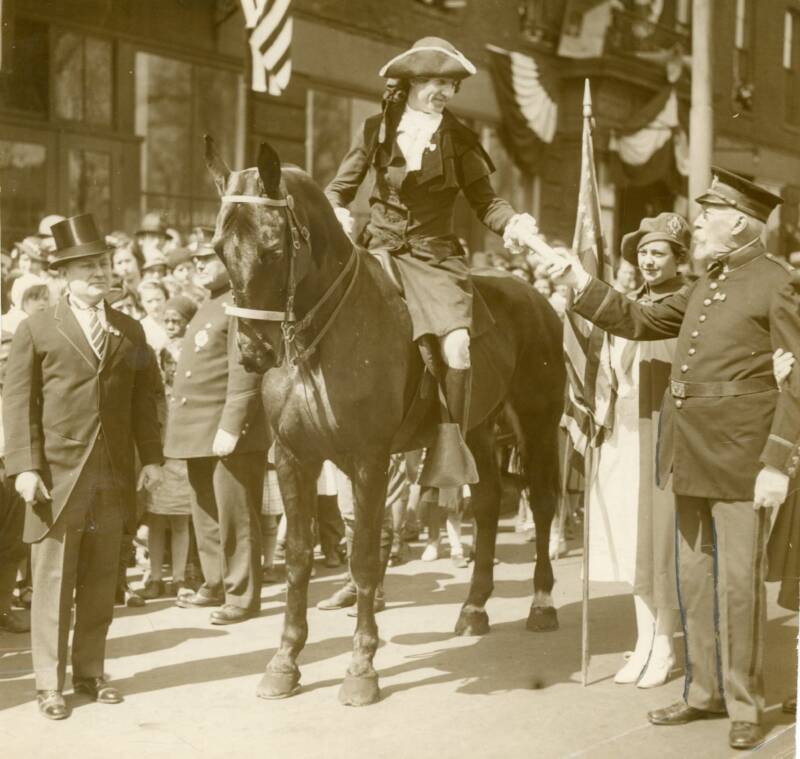
Arlington Historical SocietyA rider dresses up like Paul Revere during the Patriot’s Day parade in 1930.
It has been more than two centuries since Paul Revere’s ride. In that time, the story has become an American legend, immortalized in literature, music, and television.
The story first catapulted into popular culture with Henry Wadsworth Longfellow’s poem “Paul Revere’s Ride,” published in 1861. The opening of the poem reads:
Listen, my children, and you shall hear
Of the midnight ride of Paul Revere,
On the eighteenth of April, in Seventy-Five;
Hardly a man is now alive
Who remembers that famous day and year
Fifty years later, Thomas Edison created the first film about Paul Revere’s ride, a silent short film titled The Midnight Ride of Paul Revere. Since then, the ride has been featured in films, TV shows, and even video games.
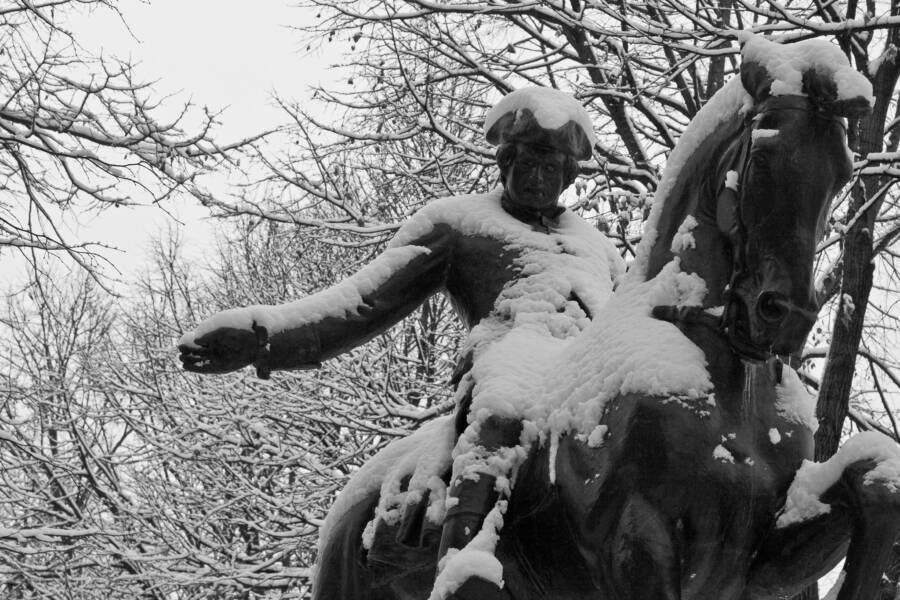
Andrew Malone / FlickrA statue commemorating Revere’s ride in Boston.
As for the route Paul Revere took to get to Concord, it is heavily marked and traveled every year to commemorate the American hero. Though more two centuries has passed, Paul Revere’s ride has not been forgotten.
After reading about Paul Revere’s ride, dive into the story of Molly Pitcher, the legendary woman who fought alongside troops during the American Revolution. Then, read about Hercules Mulligan, the Irish tailor for the British who spied for George Washington.





